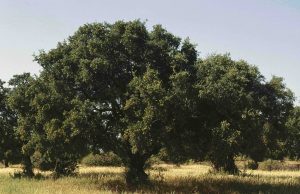Throughout the first months of 2023, the contents of the website have been reviewed. Some species have been added, major taxonomic updates have been made, and some maps have been improved. Another important aspect has been the inclusion of 752 new photographs, the majority of Sahelian species, with which little by little the visual information of this interesting part of Africa is being completed.
Among the taxonomic novelties, the following can be highlighted:
The consolidation of the Sideroxylon spinosum L. binomial for Argan. Pleurostelma schimperi (Vatke) Liede becomes Vincetoxicum schimperi (Vatke) Liede, Solenostemma argel (Delile) Hayne becomes Solenostemma oleifolium (Nectoux) Bullock & E.A. Bruce, and others.

Sideroxylon spinosum. The scientific name that Linnaeus gave to the argan is consolidated. Jesús Charco.
Zygophyllum L. is recovered, a genus that has undergone many modifications in its taxonomic treatment. Initially it contained a large number of species, including those with succulent leaflets and schizocarp fruit. Later these were united, with another from Inner Mongolia (Tetraena mongolica), in the genus Tetraena Maxim. and that’s how it was treated when this website was launched. But currently, a more synthetic treatment is preferred, according to Christenhusz et al. 2018, which merges both genera into Zygophyllum.
One more revision of the traditional genus Caralluma R.Br. is made, of which most of its species in the region are now integrated into Apteranthes J.C. Mikan, another 2 in Caudanthera Plowes, another in Desmidorchis Ehrenb. and another one in Orbea Haw.
These changes are added to others that were made at the end of 2022, such as that of the species of the genus Arthrocnemum Moq., which now pass to Arthrocaulon Piirainen & G. Kadereit, or the separation of Euphorbia balsamifera Aiton into 2 species, the original (in the Canary Islands and west African coasts, from Ifni to Cape Bojador) and the new species E. sepium N.E.Br. (of more southern and continental distribution, from Cape Juby to Cape Verde, penetrating widely inland through the Sahel).
Another updated aspect for many species has been the Conservation Status section. Numerous taxa that when the first version of the website was written were not globally evaluated on the IUCN Red List of Threatened Species, have been so in recent years. This important information is also being incorporated. Likewise, the information related to the national red lists is being updated thanks to the publications of the Livre rouge de la flore du Maroc (Fennane 2021) and the different updating works, between 2020 and 2023, by Shaltout & Bedair, in Egypt.
The experts in charge of maintaining the web strive to keep it as up-to-date as possible, but we do it altruistically and we cannot spend as much time on it as we would like. For this reason, your suggestions for updating texts, maps and/or photos are also welcome. But also, if you detect errors in the translation or in any part of the texts, slips, incorrectly identified photos, a link that does not open, etc., tell us as well. Get excited to participate!
